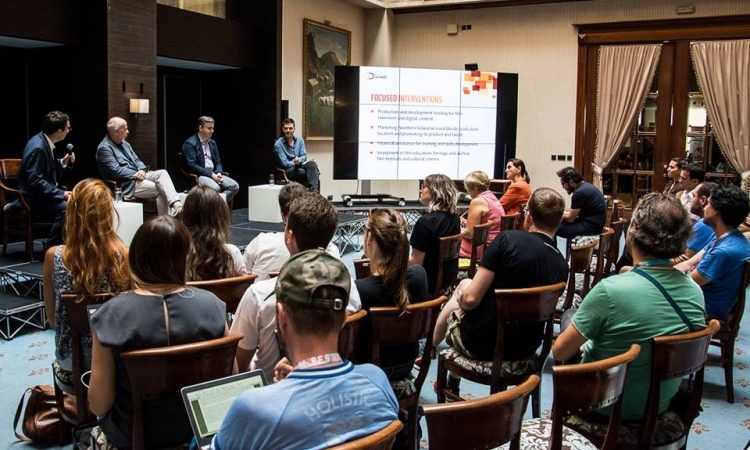Developing cities and regions through the creative industries
“Shepherd talent to opportunities – opportunities seized multiply.” (Andrew Reid, Northern Ireland Screen)


The opening event of the Regional Forum launched an insightful discussion about creative industries and their impact on host cities and regions, as well as offered miscellaneous food for thought on shaping successful creative industries.
Jovan Marjanović, Sarajevo's head of industry first introduced Andrew Barnes and Jonathan Olsberg from Olsberg SPI, a creative industries strategy consultancy conducting an evaluation of the Sarajevo Film Festival regarding its cultural, economic, and social impact on the development of Sarajevo, Bosnia and Herzegovina, along with the wider region, an assessment to be carried out by December 2017.
Concerning the cultural impact, the study, presented by Andrew Barnes, will be looking into the developing of the audience itself, into how the festival is encouraging the audiovisual content creation, inspiring artistic excellence, promoting cultural diversity, and last but not least, presenting local creators to the international market. In respect of economics, the analysis will search into the impact on jobs, GVA, as well as tax impact, tourism value, and return on investment. On the level of the social impact, the study will investigate the change of the image of Sarajevo and Bosnia and Herzegovina in general, into promotion of social values, development of cultural politics, and what is more - the pride that the community takes in the festival. The research will comprise of various analysis, survey of festival attendees, separate industry and guest surveys, as well as consultations.
Speaking next was Jonathan Olsberg, demonstrating why the SPI studies’ hard evidence is vital for the government support of the sector, how it is of central importance with the cultural objectives having switched to economic objectives, all the while explaining what the economic phenomenon of creative industries actually is. Olsberg went on to present one of SPI’s most recent studies “How Film and Television Drama Productions Grow the Creative Industries” that quantifies a previously unmeasured economic impact derived from feature film and television drama production expenditure. The results of SPI’s analysis (available here) showed that film and television drama productions drive a foremost amount of activity in the other creative industries.
The last part of the event was dedicated to the very much successful model case of Northern Ireland Screen represented by Andrew Reid, its Head of Production. Reid illustrated their success story through development stages involving building financial, production, space and sound stage, as well as creative credibility. Currently formulating the 2018-2022 strategy, the Northern Ireland Screen main focused interventions cover production and development funding for film, television, and digital content, marketing Northern Ireland as a worldwide production location, promoting its product and talent, financial assistance for training and skills development, as well as investment in film education, heritage and archive, film festivals, and cultural cinema. Closing the session, Reid gave valuable advice on consistency, constant opportunities creation, credibility building, and shepherding talent to opportunities – since opportunities seized multiply.
Petra Meterc